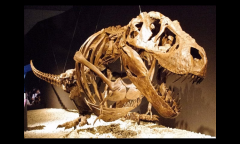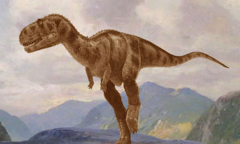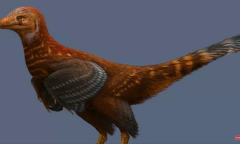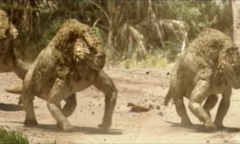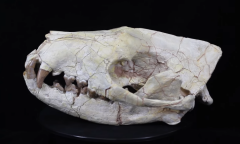By KM Diaz, | June 07, 2017
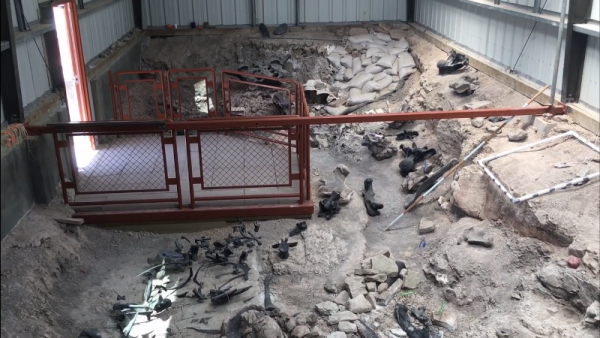
The Cleveland-Lloyd Dinosaur Quarry (CLDQ) is well known for having the densest deposit of Jurassic theropod dinosaurs ever found. (YouTube)
Scientists have finally solved the mystery of 100-year-old dinosaur graveyard, first discovered in the 1920s in Cleveland, Utah.
The Cleveland-Lloyd Dinosaur Quarry (CLDQ) is well known for having the densest deposit of Jurassic theropod dinosaurs ever found. The fossil bed has an unusually large proportion of Allosaurus fossils - a 28-feet-long predatory dinosaur in North America that lived 155 to 150 million years ago.
Like Us on Facebook
Scientists were baffled and raised questions on how many dinosaurs survived in such small area. Several theories suggest that a catastrophic event happened like dinosaurs were poisoned, severe drought causes their death, or trapped in a thick mud. The site also represents numerous events that would have brought dinosaurs on the site over a different period of time, either dead or alive.
A research team from the United States sought to reach a consensus on how dinosaur fossils ended up at the CLDQ. Researchers analyzed the processes that would probably affect the remains as they were fossilized. The team also studied the minerals in the sediments to have better judgment regarding the environment of the period, which allows them to make a reconstruction to show the history of the deposits.
Jonathan Warnock, the lead author of the study from the Indiana University of Pennsylvania, says that they did not know what result to expect before they started the research. In their findings, dinosaurs accumulated at the site over different periods of time are transported during flooding episodes. Dinosaurs likely rotted and washed in a pond when floods came.
The decaying bodies made an unsuitable environment for crocodiles and fish that's why their fossils are not present in the site. Other dinosaurs did not also eat the remains, which is why there's no presence of dinosaur bites on the fossils.
Warnock explains that they are finding some consensus of the hypotheses that surrounds CLDQ. Though the ideas could explain CLDQ, each of them has certain problems. Researchers discovered evidence from drought, flood, toxicity, and bloat-and-float. But, a consensus is key to interpret Jurassic paleoecology.
The work is not conclusive as more research needs to be done at the site. Warnock says that the research is their first work on the site and their hypotheses have alternatives. The team will expand their sample sets for geochemistry, add isotopic analyses as well as rare earth element.
In addition, the team plans to study the layers of the fossil remains to place the findings in context. They will also search for fossils of algae to analyze different site away from the quarry to link the environments.
Another big mystery remains, on why the site is rich with Allosaurus fossils. Warnock explains that their future research could determine if all Allosaurus died together, and whether they washed in or each of them went across a landscape.
The size of the floods will also be analyzed to identify whether smaller flood brought in a substantial amount of Allosaurus, or dinosaur population washed into the pond. Researchers are planning to look for the energy needed in moving pebbles and bone fragments.
The study was published in the journal PeerJ.
-
Use of Coronavirus Pandemic Drones Raises Privacy Concerns: Drones Spread Fear, Local Officials Say

-
Coronavirus Hampers The Delivery Of Lockheed Martin F-35 Stealth Fighters For 2020

-
Instagram Speeds Up Plans to Add Account Memorialization Feature Due to COVID-19 Deaths

-
NASA: Perseverance Plans to Bring 'Mars Rock' to Earth in 2031

-
600 Dead And 3,000 In The Hospital as Iranians Believed Drinking High-Concentrations of Alcohol Can Cure The Coronavirus

-
600 Dead And 3,000 In The Hospital as Iranians Believed Drinking High-Concentrations of Alcohol Can Cure The Coronavirus

-
COVID-19: Doctors, Nurses Use Virtual Reality to Learn New Skills in Treating Coronavirus Patients


